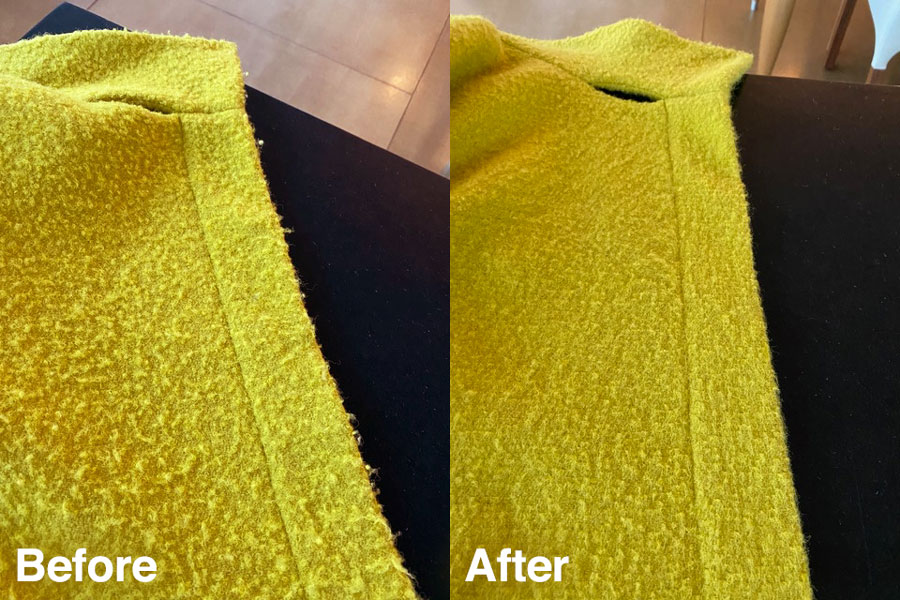This is a follow-up to a previous post I wrote about de-pilling knitwear. I ordered various tools to see which worked best, and the results are interesting. Most of the tools I ordered worked well. That said, there’s no free lunch. You have to put in the time and effort to get good results. You need excellent light, a gentle hand, a large table, the right tools for the right items, patience and time. You also have to embrace the fuzzy mess that the process creates. It’s not fast, but I found it awfully satisfying and a little addictive. I couldn’t help wanting to de-pill everything after I saw the good results.
Only one tool — the sweater stone — didn’t work for me at all. Perhaps I was using it incorrectly because it did have rave reviews. The black residue of the stone went all over the knit, the pilling stayed the same or got worse, and the smell of the stone in use is unpleasant. Goodbye sweater stone.
These were by far the best tools, each best in a particular situation:
1. Sweater Fabric Shaver with Wood Handle and Copper Depiller, and CAKKA Lint Remover Brush
This set is fabulous. The large tool with the wooden handle is great for LARGE items and areas that need a good de-pilling. I used it all over my chartreuse woolly bouclé coat with stellar results. It took a long time, but it was worth it. The pictures don’t do the finished product justice but will give some idea. Remember that bouclé wool is a textured, fuzzy surface by design, which over the years camouflaged most of the pilling. But after some elbow grease with this handy tool – it looks new, and I’m THRILLED with the results. One of my favourite coats of all time.
The set comes with a small wooden comb that they call the CAKKA lint remover brush. It de-fuzzed my cashmere knitwear effectively, but it took forever because the tool is small. It also effectively took the pilling away on a few pairs of woolly pants. That was fast because the pilled areas are small. It’s the comb with the best de-pilling surface. I tried some other combs that weren’t as effective.
2. Gleener Ultimate Fabric Shaver
The gleener works as well as the CAKKA lint brush because it has the same black de-pilling surface. I used this on Greg’s cashmere pullover because his knitwear is bigger than mine. It’s definitely better for larger knitwear surfaces. It’s also easier to use because the handle is comfortable. It wasn’t good to use on small woven pilled surfaces. The CAKKA lint remover brush was better for those de-pilling needs.
3. Kent CC2 Boar Bristle Brush
The brush does a few very specific jobs well and is a great complementary tool. It spruced up knitwear that was looking a tiny bit fuzzy, but wasn’t pilling yet. It did a wonderful job of smoothing the knitted surface, making it look pristine. It’s also an excellent tool to use to brush off the fuzz that is collected when you’re de-pilling large knit or bouclé surfaces with other instruments. Use the brush with vigour for the best results.
I don’t know how often I’m going to need to use these tools on the same items as they either keep on pilling, or pill at a slower rate. In the extreme, if you continue using these tools you’ll hack away at the yarn causing bald patches and holes in the garments. So we’ll see. But for now, I’m really glad I took the time and effort to de-pill our knitwear. It feels sustainable in the best way, and looks fab too.








